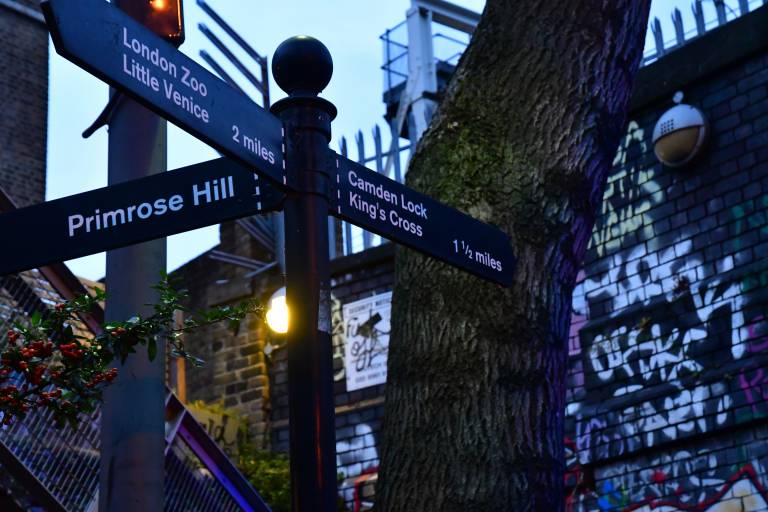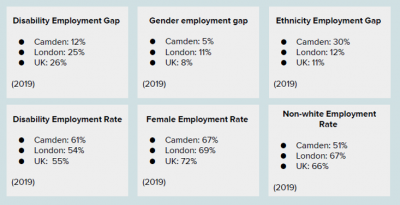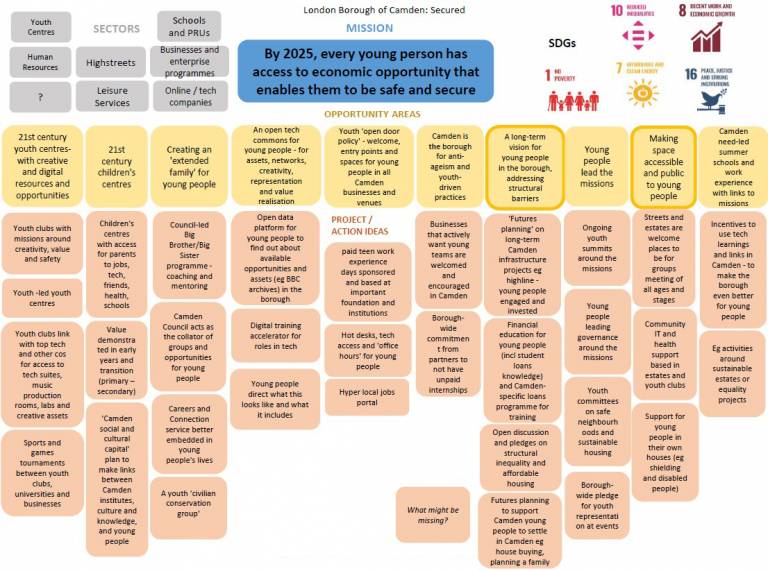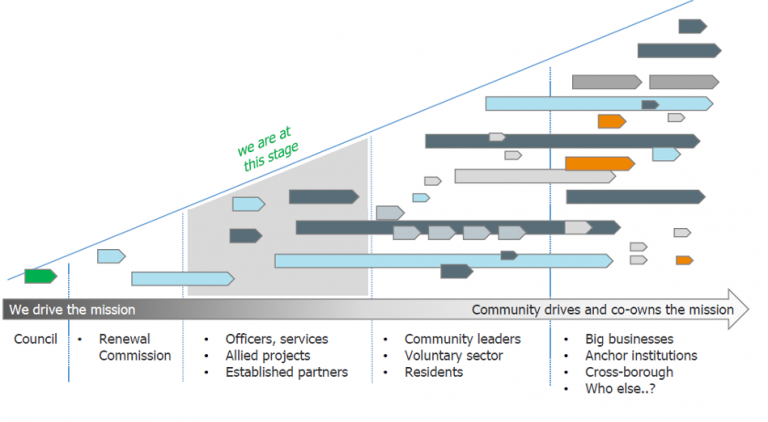Camden's Citizen-Centric Approach to Missions

22 July 2021
What is the context for the Camden Council’s missions programme?
Camden is a borough marked by contrasts, contributing no less than 1.2% of the UK’s entire GDP, while 43% of its children grow up in poverty.
Indeed, the area boasts the third highest number of businesses of any region in the country, including Google and Facebook, and the square kilometre around Kings Cross contributes more to UK GDP than Manchester and Birmingham combined. This GDP contribution is notable, but only part of Camden’s ‘richness’. Camden is home to citizens who speak over 130 languages and it is a borough with a radical history of civic action and people-powered movements.
Despite these strengths, the child poverty rate is 7% higher than that of London as a whole and one in four Camden children claim free school meals. What is more, while Camden does have lower gender and disability employment gaps, it has a much higher ethnicity employment gap than the UK and London average (see Figure 1).
The borough has been working to address these challenges. Developed with the community through a citizen assembly, public events and resident surveys, Camden 2025 sets out a vision for Camden to be a borough where everyone has a chance to succeed and where nobody gets left behind. Camden 2025 and the Council’s response have been developed — and are being delivered on — in the spirit of shared endeavour, recognising that everyone who lives and works in Camden has a role to play in making it the unique place it is.
“Since Camden 2025 was written, Camden has declared a climate emergency and through a citizen assembly set a bold and ambitious climate action plan to achieve net-zero emissions by 2030.
The COVID pandemic and the Black Lives Matter movement have also given the ambition of Camden 2025 to address inequality more urgency, and shown what can be achieved when people come together with a shared purpose.
In September 2020, Camden Council and IIPP convened the Camden Renewal Commission to bring this spirit of shared endeavour into Camden’s approach to renewal beyond the pandemic and adopt a mission-oriented approach.

Figure 1: Camden has an ethnicity employment gap that is much higher than the London and UK average.
What was the approach to Mission-Oriented Innovation?
Inspired by community stories and informed by evidence, both of which reflect on local people’s lived experience of the pandemic, and with the desire to help inspire boroughwide action, the Renewal Commission has developed, and continues to test with wider communities, four renewal missions for Camden:
1. By 2030, those holding positions of power in Camden are as diverse as its community
2. By 2025, every young person has access to economic opportunity that enables them to be safe and secure
3. By 2030, everyone eats well every day with nutritious, affordable, sustainable food.
4. By 2030, Camden’s estates and streets are creative and sustainable.
Camden is experimenting with mission road-mapping and one of the strengths of a missions-based approach is the ability to focus on the different levers for change that can be used to create change. The Renewal Commission has looked at the levers for change in Camden, from providing services to residents and shaping public health, to planning, procurement and public investment. The Commission is also exploring new ways in which Camden Council could raise funds for renewal, for example through community wealth funds, and has considered alternative forms of ownership, such as co-operatives or public-commons partnerships.
Camden’s work on missions is still in its early days and the next step will be to experiment with collaborative mission projects that can support each of the respective missions (see Figure 2).

Figure 2: A hypothetical set of projects that could be implemented to support Camden’s youth mission. (Source: Camden Council)
What solutions are emerging from the missions approach?
Across the missions, a key area of focus is enabling the community to lead and to seed experimentation across the borough in pursuit of the missions. For example, in February 2021, Small Green Shoots and Fitzrovia Youth in Action organised a summit that brought together young people to talk about what the ‘youth mission’ means to them.
Camden Council has also partnered with a participatory grant-making organisation in Camden, Camden Giving, to make available a We Make Camden kit of funding, support and networking to take forward their ideas in relation to the missions. Camden Giving currently has £145,000 available for such grants in 2021.The decision about who receives funding will be made by a panel of Camden citizens. The council is also building on the early partnerships developed through the commission to take forward activity to achieve the missions. Ultimately, the aim is that community leaders, private sector organisations, anchor institutions and citizens themselves drive forward and co-own the missions with the ultimate aim of cultivating deep and sustainable roots within Camden.
What challenges does the Camden Council face?
Going forward, Camden Council must keep two risks in mind: first, as is the case for all missions, institutional support for such locally and municipally based initiatives are subject to continuous political cycles. As such, the missions will need to gain deep political traction in the borough and legitimacy in the Greater London Authority and beyond. Second, the missions will require distributed ownership among Camden-based businesses and anchor institutions. As the missions come to life through early projects and activity, collaborations across a variety of strategic partners and sectors for support will be critical.

Figure 3: The Renewal Commission’s community-driven and co-ownership approach. (Source: Camden Council)
 Close
Close

